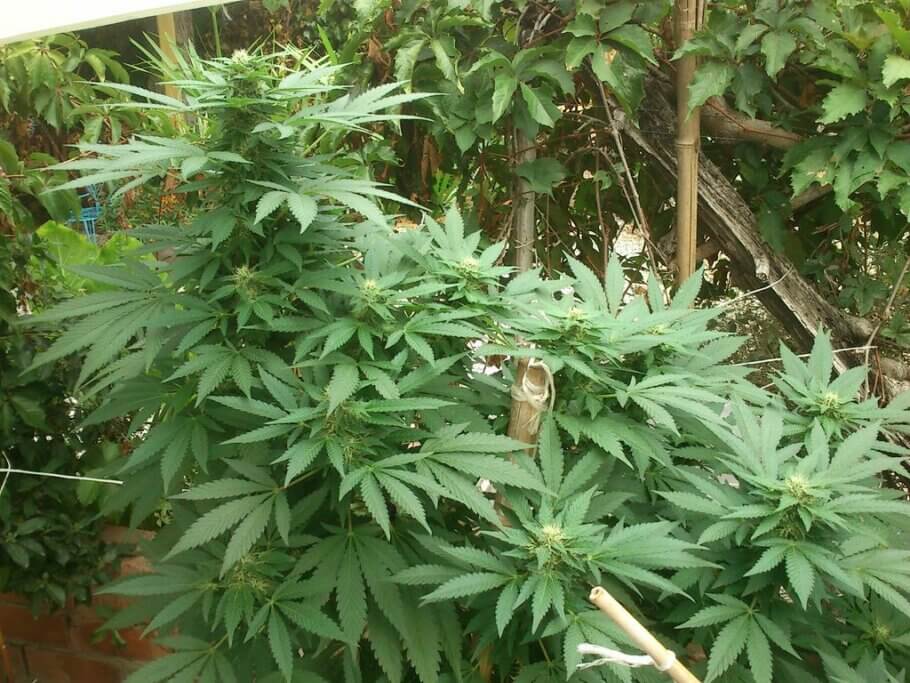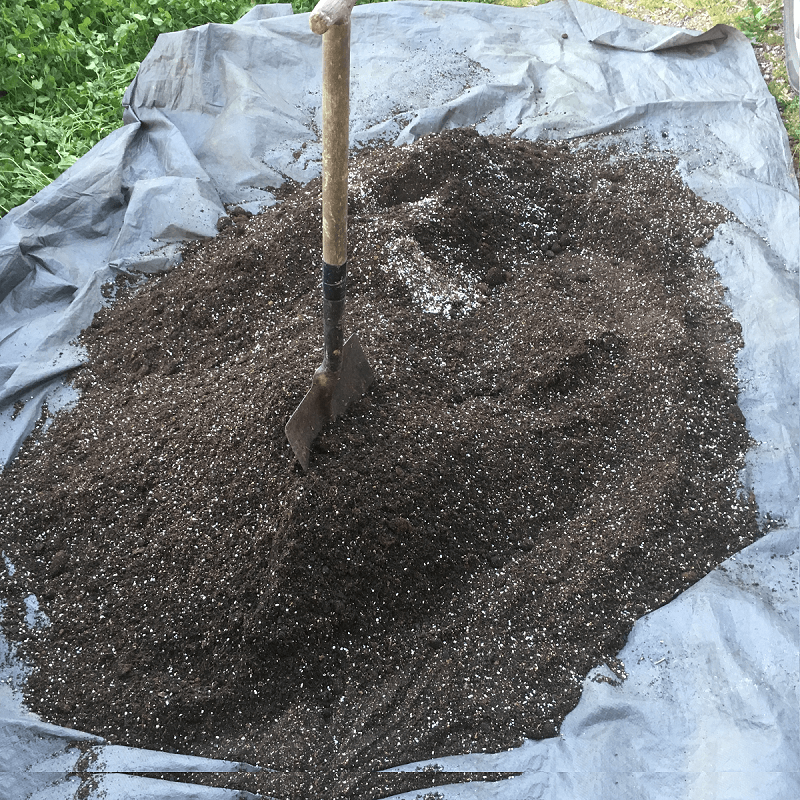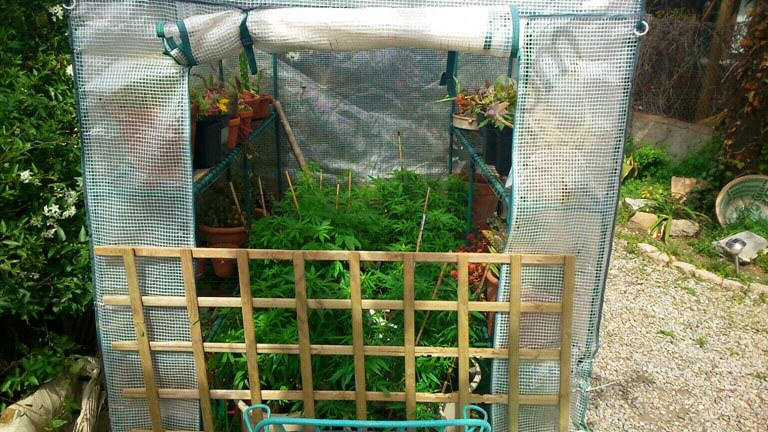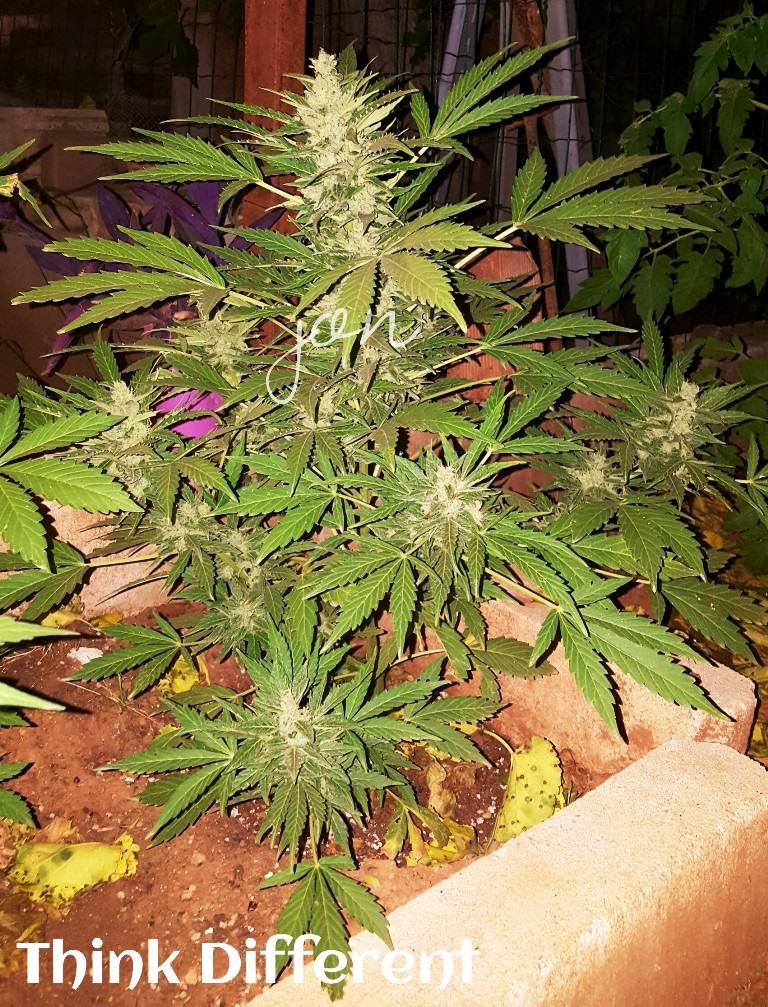Growing outdoors for beginners: 10 tricks to start off on the right foot
List of contents
So you've decided to grow your own cannabis plants outdoors but you have no idea where to start... it's true that on the web (also in written publications) you have all the information you need, but we understand that sometimes it is hard to start looking for information on the different aspects of the crop, and you may end up with even more doubts.
For this reason, today we have prepared a guide with 10 key points that you must take into account so that your next outdoor crop goes smoothly and you can enjoy a generous and aromatic harvest of flowers in a few months. Of course, we could talk about micro siemens per square centimeter or the reproductive cycle of the aphid, but that is not our intention, but to make things easier for you and prevent you from making mistakes that could ruin your crop. If you follow these tips and have some luck (factors like weather or pests are not always controllable), you shouldn't have any problems in this new adventure. Let's go!

Before starting to grow
We know that you are dying to germinate your seeds and start to see your plants grow, but before even purchasing them, we recommend that you take into account the following aspects of cultivation.
The ideal spot
Perhaps you have already studied your area and know exactly where to place your plants, although you may not have even considered it. The first thing to keep in mind is that marijuana loves sunlight, so plant placement should have as much direct sunlight exposure as possible. The more hours a day, the better the plant will develop. Try to avoid areas where any type of artificial light can shine at night, as it could prevent your plants from flowering. If you have your garden or balcony totally contaminated by streetlights, for example, we advise you not to make things harder for you and grow automatic seeds, with which you will not have this problem.
If you can choose between a place with a lot of wind or another with less wind, the latter is better, because once the plants have good bud tails, their branches are more likely to break in strong winds. Of course, and for security reasons, try to avoid your plants from being seen from the street or other houses, because leaving them in sight will only tempt thieves. Summarizing:
- Choose a site with maximum hours of direct sunlight
- The nights must be totally dark; in case of night light pollution, grow autoflowering strains
- Avoid particularly windy places
- Place plants out of sight of others

Growing medium and nutrients
Once you are clear about the location of your crop, it is time to decide which substrate and fertilizers to use. You can grow outdoors in coco coir, but we don't recommend it if you're just starting out, as things get a bit more complicated. It'll be better to start with a good substrate for cannabis, like Light Mix or All Mix. If you were planning to grow on mother earth, we advise you to dig holes of at least 40l per plant and fill them with this type of substrate.
Regarding nutrients, you have several options, mainly use solid fertilizers and irrigate only with water during the rest of the crop (preparing a mixture of nutrients and soil called Super Soil), or use liquid nutrients, which you will dilute in the irrigation water and use a couple of times a week. Used well, both methods offer great results, so the choice is yours. Be that as it may, follow the dosing instructions of the brand of fertilizer you choose (remember that it is always better to use 80% of the recommended dose than to go too far and overfeed the plants. In case of observing nutrient deficiencies, you can always increase a little the dose of fertilizers). If you decide to prepare a Super Soil, here is a quick and effective way to do it:
How to make organic Supersoil
Sowing season is upon us, and with it, we must finalise the preparations for the next indoor season. Today we will explain what Supersoil is and how to prepare some so that you can cultivate an entire crop irrigating exclusively with plain water thanks to a substrate that's as alive as it is fertile.
So that you know a little about what you are doing when fertilizing, you should know that your plants consume various macro and micronutrients. During growth, the main nutrient demanded is nitrogen, while in flowering it is phosphorus and potassium (which you will find in PK boosters).
In summary:
- Use soil for cannabis, such as Light Mix or All Mix
- In case of direct cultivation in the ground, dig holes and fill them with good substrate
- Prepare a supersoil (you will water only with water throughout the crop) or use liquid fertilizers about 2 times a week
- In case of observing deficiencies, try to identify and correct them by applying the corresponding liquid nutrients
- In growth the plants demand a lot of nitrogen, while in flowering they need more phosphorus and potassium
Pots and containers
Well, it's time to choose which pots you are going to use (if you use them, of course). In outdoor cultivation, where in many places the plants must withstand very high temperatures, it is always better to use white pots. This way you avoid "cooking the roots" during the hottest hours of the day. Ideally: have your pot (for example, 40l) inside a larger one (60l), so that there is a small air chamber between the two.
The pots that you usually find to grow marijuana are usually made of plastic or fabric. Although the price of the latter is significantly higher, the truth is that the development of the plants in this type of pot is usually higher, so they are the ones we recommend if your budget allows it. About the size, during the growth stage, the ideal is to perform a minimum of 2-3 transplants, while once in bloom the plants no longer move from the pot. A good option is to germinate in 1-2 liter pots; after a few weeks, move the plants to 5-7 liter pots, do the same with a 15-liter pot, and finish with a last transplant before flowering at about 40-60 liters. Keep an eye on the bottom of the pots, and when you see them with enough roots, you can do the next transplant. Logically, a plant that flourishes in a 15l pot will not produce the same as if it was in a larger one.

Remember that, in case of growing autos, you must do it without any transplant, directly into the final pot, which should not be less than 20-25l. We summarize:
- It is always better to use white or light colored pots, even shade them in some way
- Textile pots usually offer better results than plastic ones
- You can decide to do more or less transplants; The ideal is to finish the growth phase with pots of no less than 40-60l
- In case of using automatic seeds, avoid transplanting and use a 20-liter pot at least from the beginning
Pests and cannabis
Your plants can be sensitive to various types of pests and diseases. Outdoors, the most common are aphids, spider mites, thrips, whitefly and, above all due to the damage caused, caterpillars during flowering. In addition, you should watch out for fungi such as powdery mildew (white powder on the top of the leaves) or botrytis (rotten gray or brown buds).
As we always recommend, it is always better to prevent pests, do not doubt it. Use a broad-spectrum insecticide and fungicide periodically during the growth phase and you will avoid many problems during flowering (when it is not advisable to use this type of product unless it is a desperate case). Especially with caterpillars, try to make applications every 3-4 days during the entire pre-flowering period of the plant (when it begins to produce the first pistils), that is, the first 2-3 weeks of flowering.
- The most common outdoor pests are: aphids, caterpillars, red spider mites, whiteflies and thrips
- Regarding fungi, you should especially watch out for powdery mildew and botrytis
- Perform periodic spraying with broad-spectrum products during growth
- Try to avoid spraying your plants with these products when they already have buds formed
Outdoor cannabis: The growth phase
Let the party begin! You already have everything prepared, you have even chosen which seeds you are going to grow and all that remains is to germinate them and finally start your grow.
Seed germination
Although germinating seeds is easy when the steps are followed correctly, it is one of the most important phases and where you have the least margin for error. To do it without problems, we recommend you take a look at the following post. As you will see, whatever method it is, it is as simple as effective:
How to germinate marijuana seeds
We show you in this post how to properly germinate your marijuana seeds. You only have to follow these 8 steps and have a little patience to save time and money.
Choosing the right time to do so is just as important as germinating correctly. It is best to wait until spring, and when the nights begin to be less cool (usually a considerable change is noticed in a matter of a few days), it will be the perfect moment. You can germinate later, though then your plant won't grow as large as it would have if it germinated earlier. Unless you grow autos, try not to germinate later than June, or your plants can get really small depending on their genetics!
- Germinate your seeds during the spring
- It is very important that the germination medium does not dry out during the process, nor do you soak it
- The seeds have a pointed end and a rounded end; when planting, always place the pointed end down, about 2cm deep

Marijuana and irrigation
As with any other plant, proper watering is key to success. If you make your plants thirsty due to lack of watering or drowning them with too much water, it will have a negative impact on their development. Identifying that they need watering is easy: you will see their leaves drooping, without tension, and the substrate will be completely dry. Water generously and in a few hours you will see that they have recovered. Make sure it doesn't happen again! On the other hand, if you are watering too much, you will also see the plant with slightly drooping leaves, but in this case, with a humid substrate: a clear symptom of excess water, or what is the same, you must wait longer before watering again.
To be sure of when you should water, there are several ways. One is to bury your finger about 3-4cm into the ground. If it is dry, it is a good time to water; if you feel it wet, wait until the next day and test again. Another way is to weigh the pot before and after watering; you will get a good idea of the difference in weight, and then it will be easy for you to determine whether the plant needs water based on its weight. Of course, this method is not recommended with really big pots unless you're the Hulk! When watering, it is not necessary for your pots to drain liters and liters of water. As soon as you see that they start to do it, you can move on to the next one. We summarize:
- If your plants lack water, the leaves will lose their tension and will be withered, with the dry substrate
- If your plants have excess water, something similar will happen but with a moist substrate
- Bury your finger 3-4cm into the substrate. If it's dry, water. If it's wet, wait
Transplants
We have already covered the topic of transplants when talking about pots, although we want to clarify a couple of things for you before continuing. In general, and if they are done when it is due, transplants promote faster development of plants. You can germinate your seeds directly in large pots or in the ground, but especially during the first weeks, don't be surprised if growth is slow; until the plant does not have a good root system, it will not begin to "really" develop its aerial part, stems and leaves. The larger the container, the more it will take to reach that point. If you want more information, here is an article where we tell you everything in more detail:
When to transplant cannabis and how to do it
On many occasions, transplanting your cannabis is crucial to achieve the best possible yields. However, it's natural to have doubts, especially in relation to when to do it, what pot to choose, how many transplants are necessary, or simply how to perform the transplant causing the least possible stress to the plant. In this article we explain everything.
Outdoor cannabis: The blooming phase
After a few months of growth, your plants must have already reached a considerable size, and it may be that during the month of July and early August, you begin to see how their nodes lose their symmetry (they stop growing at the same point and start to do so alternately) and they begin to create the first pistils...the nights are getting longer, which means that flowering begins!
Irrigation and flowering marijuana
Over the last few weeks, with both the temperature and the size of your plants increasing, you may have realized that you must water them more often. As the plant develops flowers, it will need more frequent watering, something important to keep in mind. Remember that it is always better not to water during the hottest hours of the day, but at dawn or dusk (cannabis prefers morning watering).
- During flowering the plant will need more water
- It is always better to water in the morning or, failing that, in the afternoon
- Do not water with water that may have been left in a container in the yard and is hot

Cannabis nutrition, bloom period
Once the flowering phase begins, your plants will stop demanding so much nitrogen and will need more phosphorus and potassium. Do not be alarmed if you see that their vertical growth ceases, it is normal during this stage; the plant stops growing in height to focus all its energy and resources on the formation of flowers. Normally, a PK booster is used, rich in the elements that the plants will need the most, whether they are slow-release solids (better to use them when flowering begins) or liquids, which can be added with each watering. Be that as it may, when you see that your plants are close to harvest, you can stop providing nutrients and irrigate only with water during the last 2 weeks of cultivation.
- During flowering, marijuana plants need more phosphorus (P) and potassium (K)
- Do not worry if your plants stop growing in height
- Try to use a fertilizer rich in P and K, formulated for flowering
- During the last two weeks before harvesting, try to irrigate only with water

Outdoor cannabis harvest
Establishing the optimal moment to harvest is easy since you only have to observe the color of the trichomes to know if the great moment has arrived. In this article we tell you everything:
When to harvest marijuana plants according to trichome ripeness
Here you have a translation of an article from TGA Subcool about the harvest of cannabis plants. Both the effect and taste of marijuana are directly related to its harvesting time. How to know which is the perfect time for harvest? What are trichomes and how to harvest plants depending on their colour? How to maximize your crops according to the desired effect? Here you have the answers to all these questions, with examples and personal experiences...Subcool
Basically, you can take a photo with your smartphone and zoom in until you clearly see the color of the trichomes. When you see almost all of them milky, you can start preparing your dryer! To harvest you can do it by cutting and hanging whole plants or branch by branch, as suits you best. Locate your dryer in a dark, dry, cool, and well-ventilated place, it will be the best way to dry your marijuana without degrading it during the process. In a matter of a couple of weeks, you should be tasting the fruit of your efforts!
Bonus Track, the choice of seeds
Of course, the success of your grow depends to a large extent on which seeds you choose. First recommendation: do not be guided by the name. The second thing we recommend is to determine what type of effect you are looking for, which will already make you rule out many varieties. From here... What flavors do you prefer? Do you want huge plants or rather small ones? Are you going to use them to produce some resin concentrate? Are you looking for very specific medicinal effects? Will you grow in a particularly humid or dry area? Once you have answered these questions, you will see how finding your ideal variety becomes much easier. And to make it even easier for you, we have created our Seed Selector, which will help you find your perfect cannabis strain in no time.
Happy growing!










































































